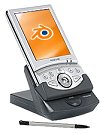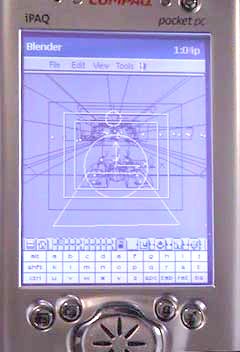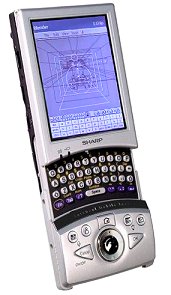| |
 |
Blender
3D for
the Sharp Zaurus
- and other PDAs -
|
|
|
|
What
is Blender?
For
the clueless: go check out www.blender3d.org
now !!!
Why?
Why
the heck port it to the Zaurus, or any other PDA for that
matter?
It is
not a matter of "Why
not?", it is a matter of "Why
yes?", because beyond the plain and
simple fact that it is
possible, we even think it would prove to be very usefull.
We
believe that Blender
3D is perfectly well suited to be ported
to the PDAs, contrary to the first impression that many
people may have.
As a
matter of fact, it bothers me very much to hear remarks
like "That
would be way to slow" or
"That wouldn't be usefull on such a small screen!".
Too
slow?
In
2001,
NaN impressed the 3D community at Siggraph with
an experimental port to the Compaq iPAQ.
This
port was meant to prove Blender's portability,
and even though the code was not
even optimised for fixed point
operations, it ran pretty well (even in textured
mode) on an iPAQ
3630 (206Mhz Intel StrongARM processor)
under WinCE!
Blender
offers the download of this port here,
so you can play around with it if you have an
iPAQ with WinCE, but remember it's a prototype.
It is experimental,
unoptimised
and not supported
so please do not
mail questions or report bugs
to the original authors (NaN / Blender Foundation).
This
way you can find out for yourself that the screenshot
to the right is not
a fake.
For
the people who still remain sceptic, I would like
to remind them that in the early days of 3D, this
kind of software ran on very humble hardware compared
to the speedmonsters we have today. Even today's
PDAs are far more powerfull than the desktops
of the past.
3DStudio for DOS ran on intel 486 processors.
Even some of the new 3D suites run very smoothly
on low-end hardware, like Lightwave3D, Animation
Master, Rhino3D (and of course Blender) run very
smoothly on my old pentium 233Mhz laptop.
And
with nVidia's
upcoming 3D acceleration cards for PDAs...
The PDA world is about to change very seriously...
|
|
 |
Screen
too small?
Gimme
a break!
We
never heard anybody complain about screen size when
it comes to text editing, web surfing, using spreadsheets,
etc...
And if it does bother that much, then why not throw
away the PDA immediately and use a laptop instead?
If
the screen size and the "stripped down versions"
of your favorite desktop software would really be such
a pain, then why would you still use a PDA in the first
place?
So
face it: there is no excuse not to port Blender to the
PDAs. With a well thought layout / GUI, Blender on the
PDA can be an excellent tool for small modeling / animation
work. The same PDA to Desktop workflow that is used
for other applications can be applied to 3D as well:
objects can be split in smaller parts that can be manipulated
seperately and the "final touch" can be done
on a desktop.
One
tends to forget resource friendliness in his working
methods, because one is so quickly getting used to high-end
hardware...
"Size
doesn't count, it's what you're doing with it that counts!"
(Sounds familiar? I surely hope not, hehehe). |
So
why yes?
- yes:
because the next generation of PDAs will use faster processors
& 3D acceleration
-
yes:
because the CL series of the Zaurus come with a full VGA
640 x 480 pixels screen
- yes:
because
Why not?
Even though it is not a priority, scoring geek points is
an extra bonus :o)
- yes:
because
it is SERIOUS FUN
to have an Open Source 3D suite on your PDA :o)
Stay
tuned!
Stay
tuned for news and updates! In the meanwhile, for the impatient,
you can download the old iPAQ
port here
to have some fun already!
Reactions
Reactions, help
(we're looking for programmers!) and donations are welcome.
Please let us
know if you are interested in a PDA
version of Blender and which PDA you would
like to see it ported to.
Click
here
to send a mail, or contact us through the Zaurus
Blender Project Page on Sourceforge.
 |
So
if you've got experience in C,
C++
and Python
and are willing to lend us a helping hand in optimising
Blender for the Zaurus, you are most welcome.
The
Z Blender Team.
|
|
|
|
|